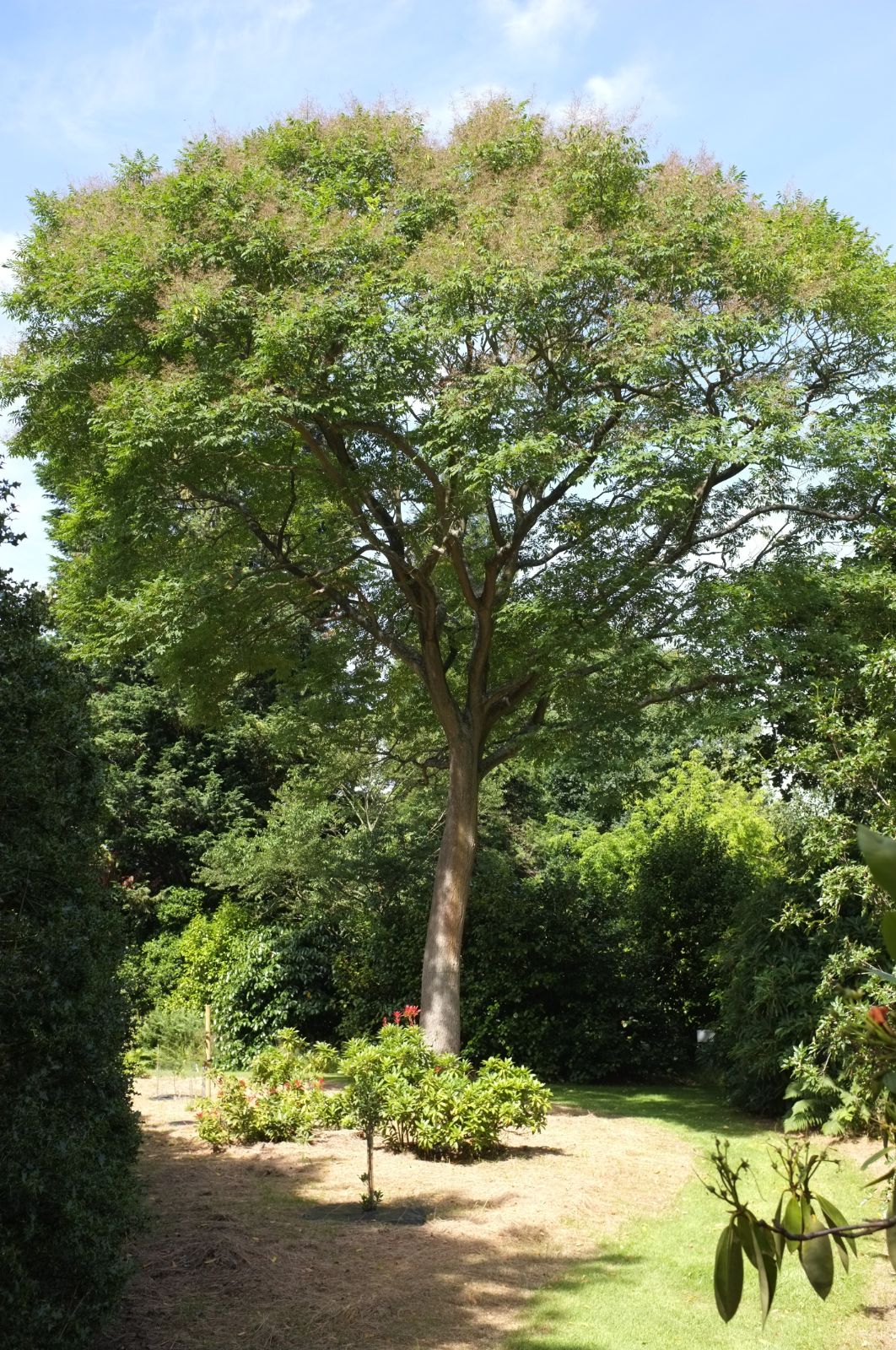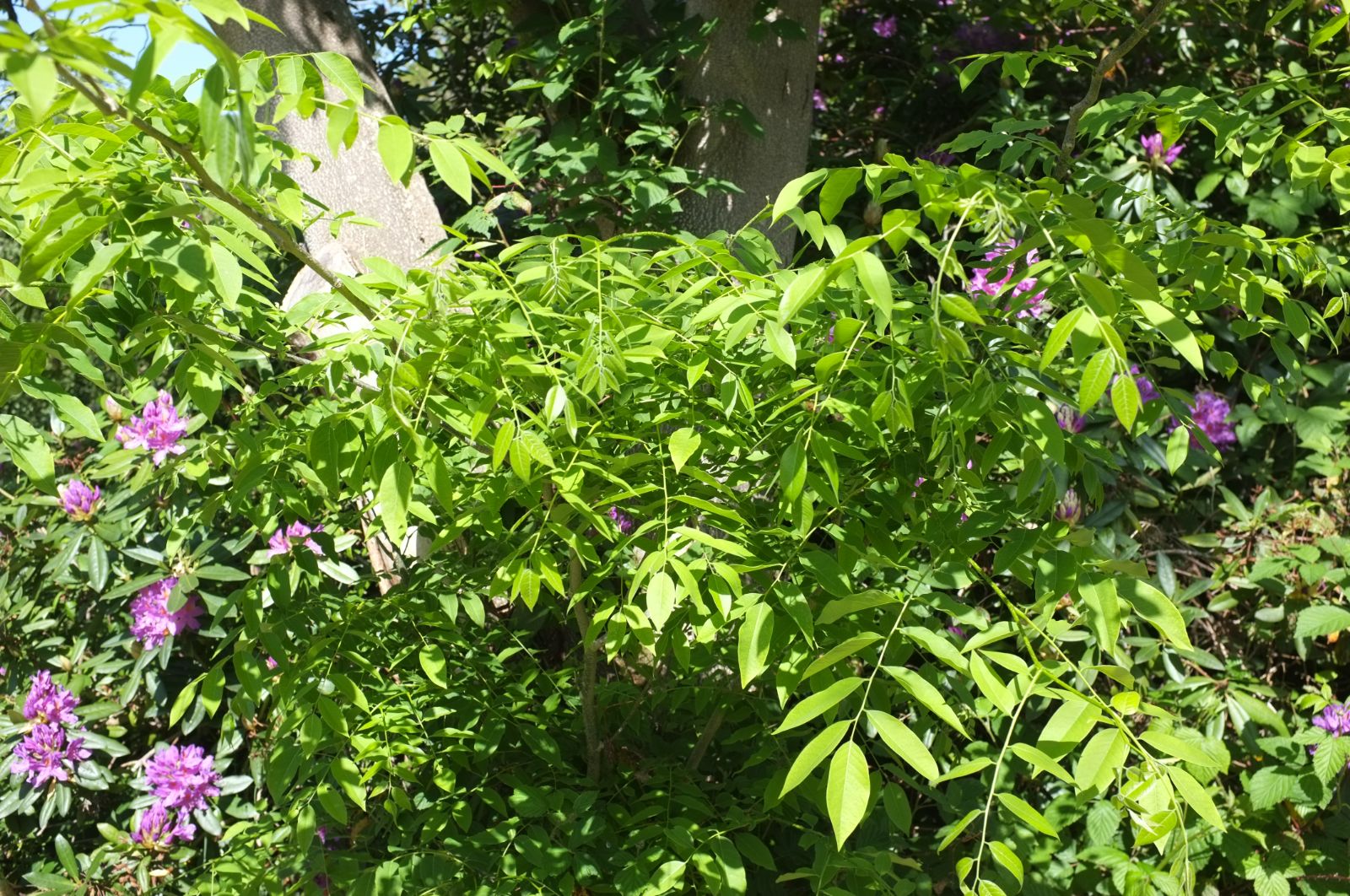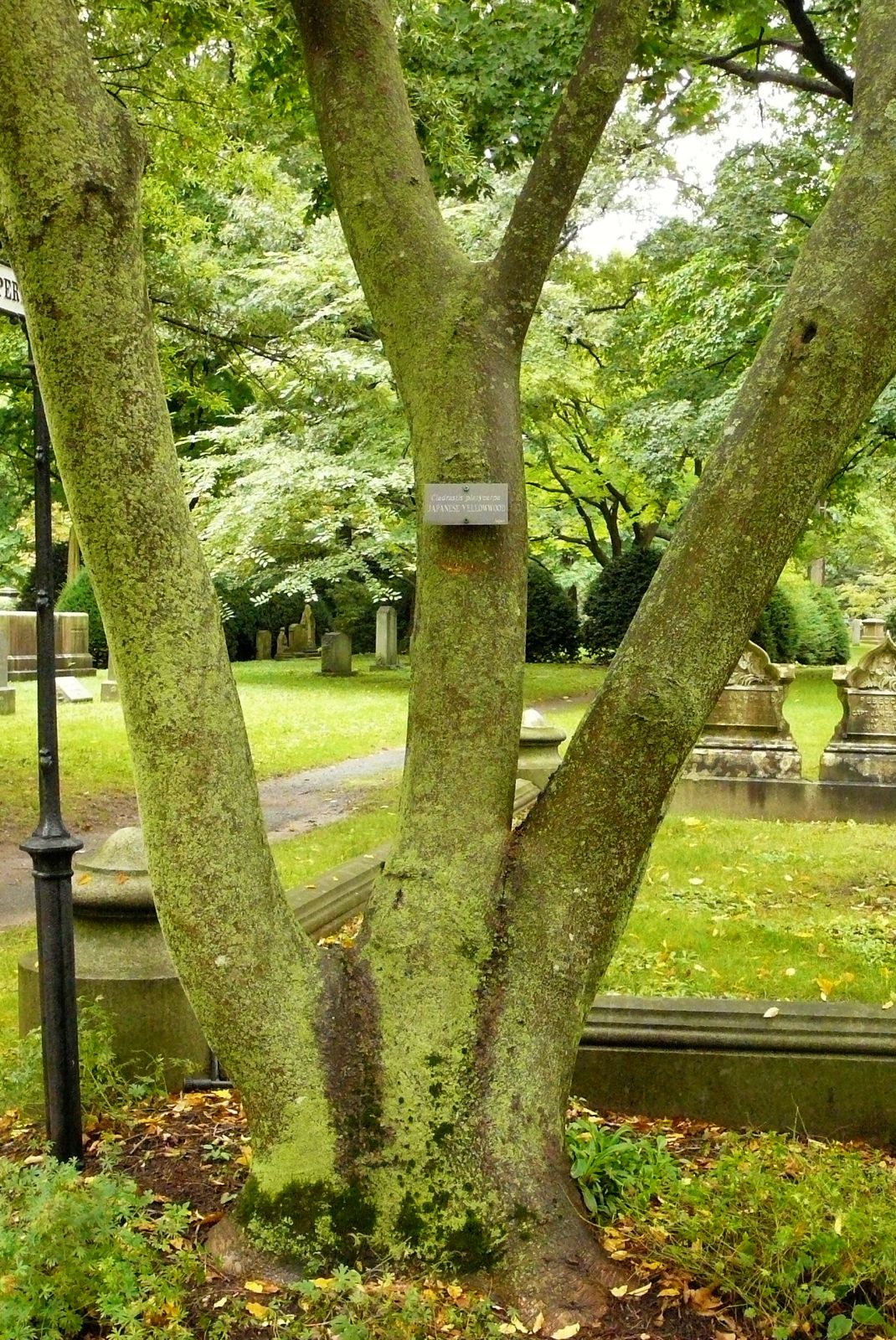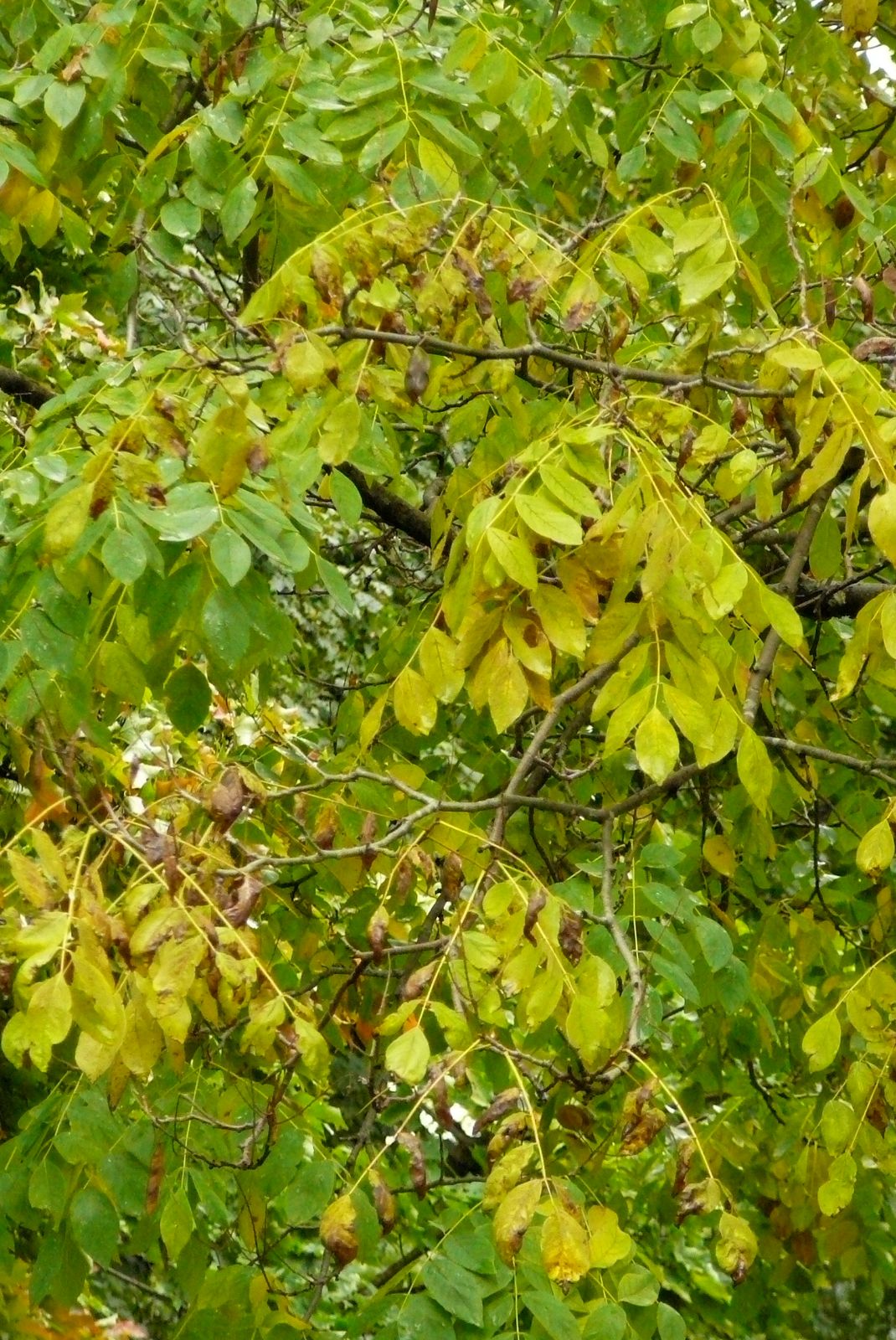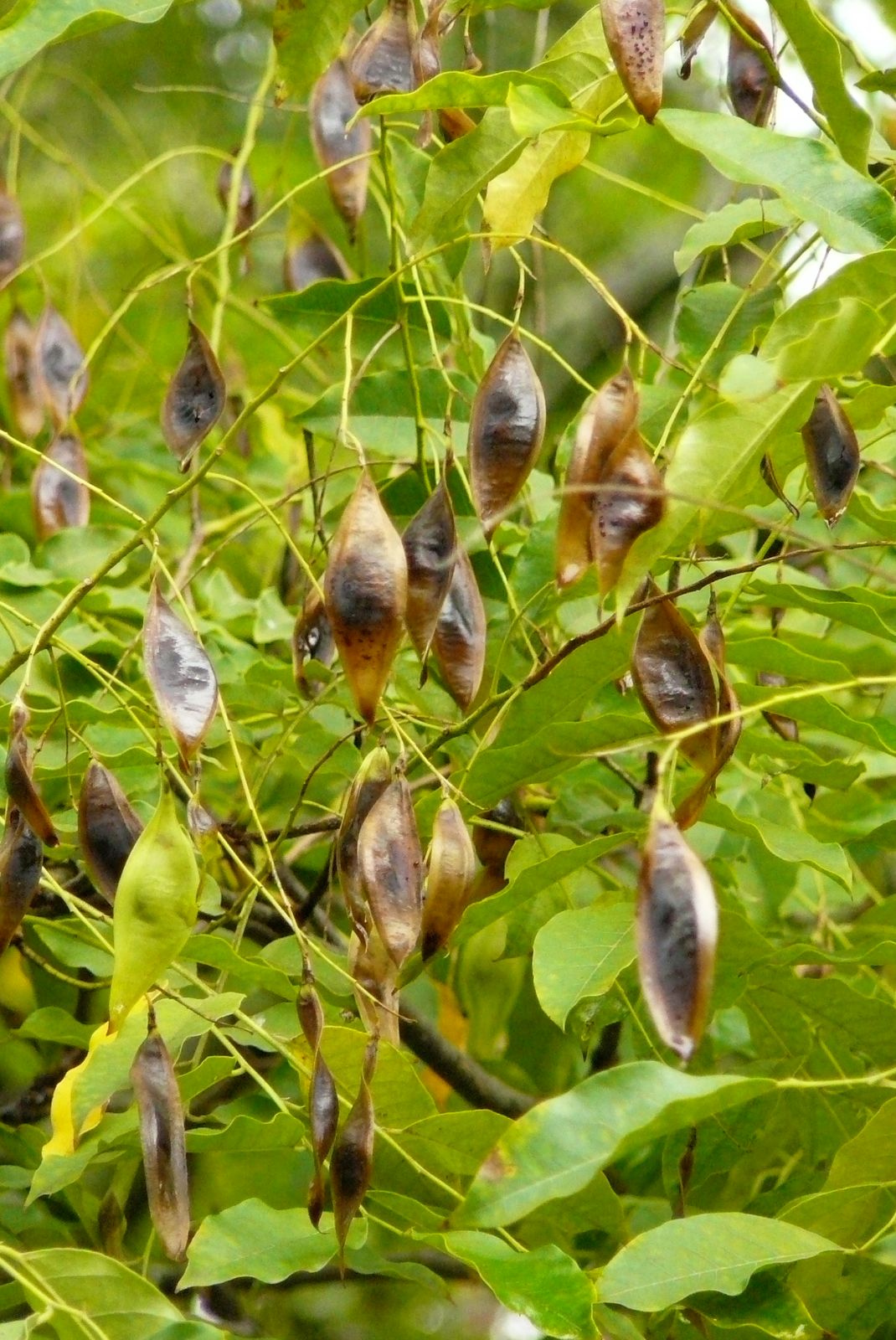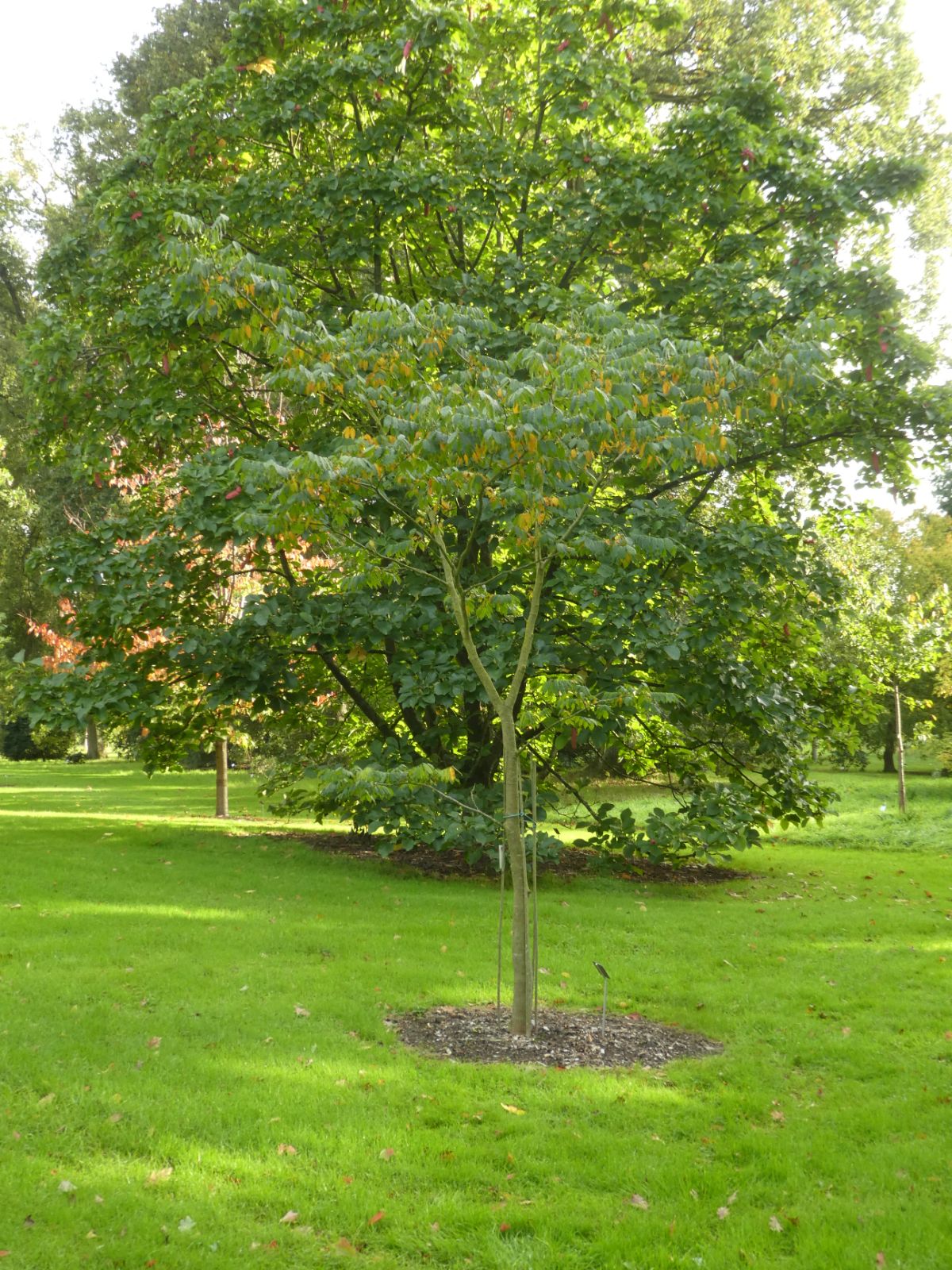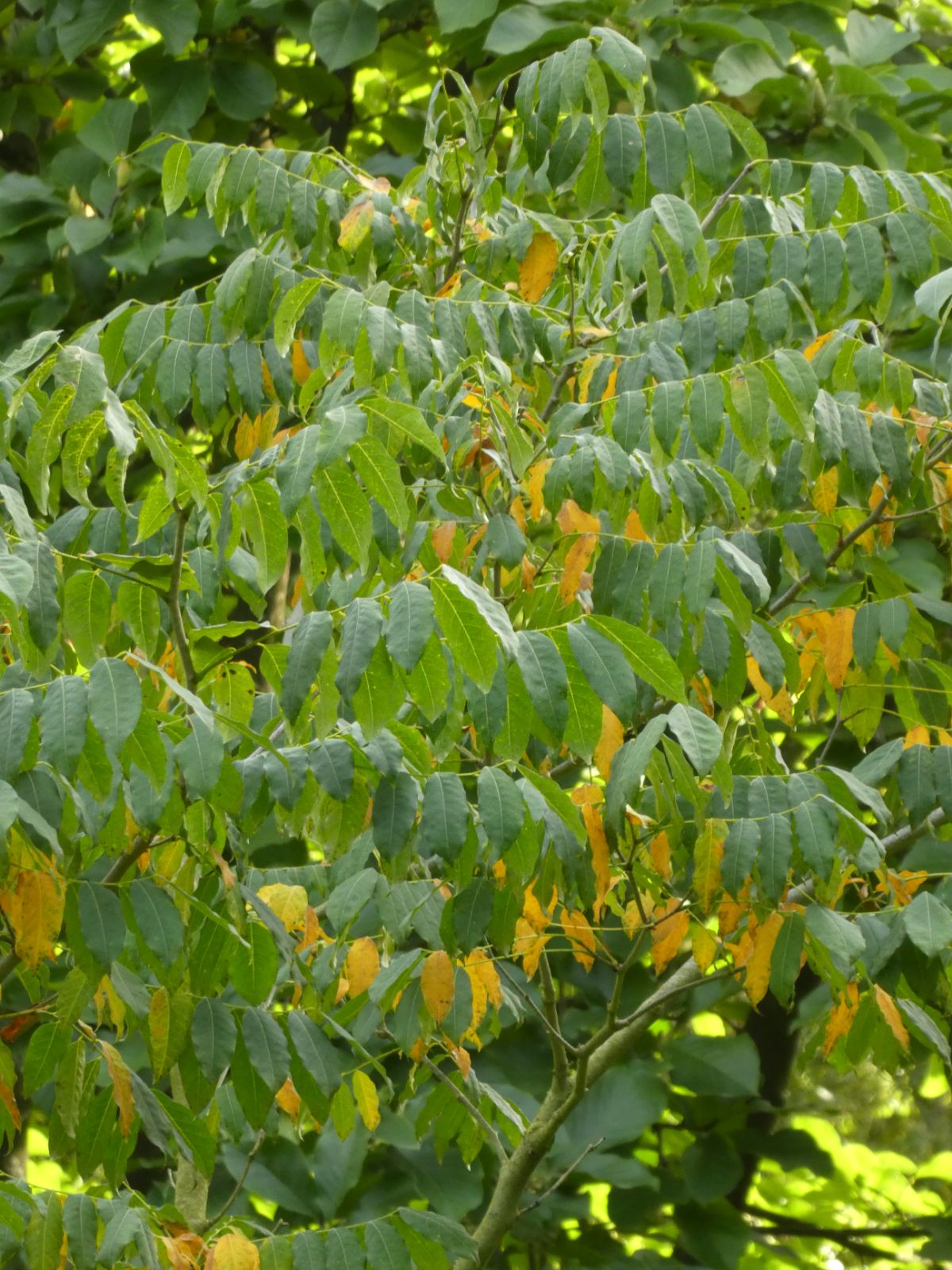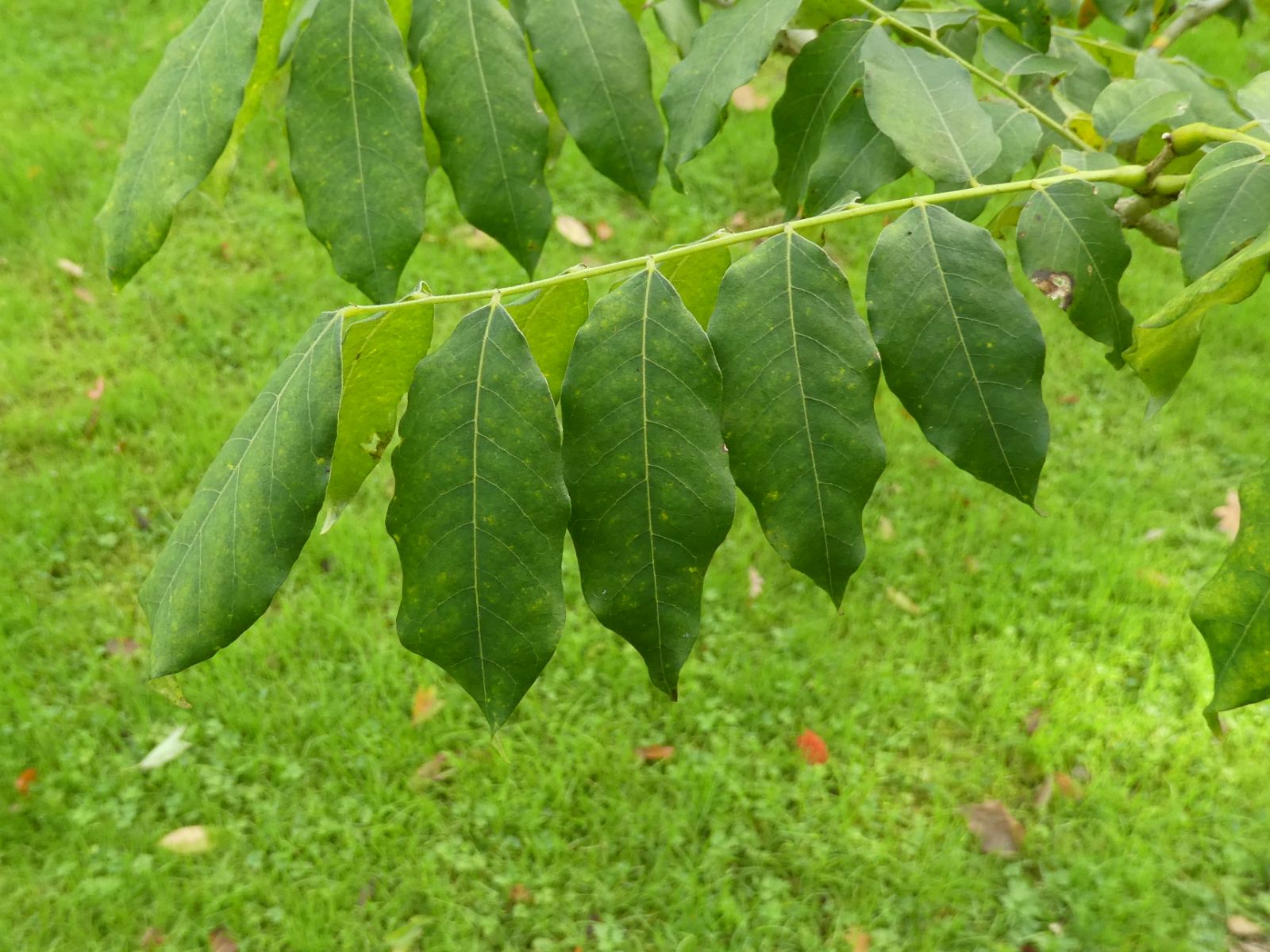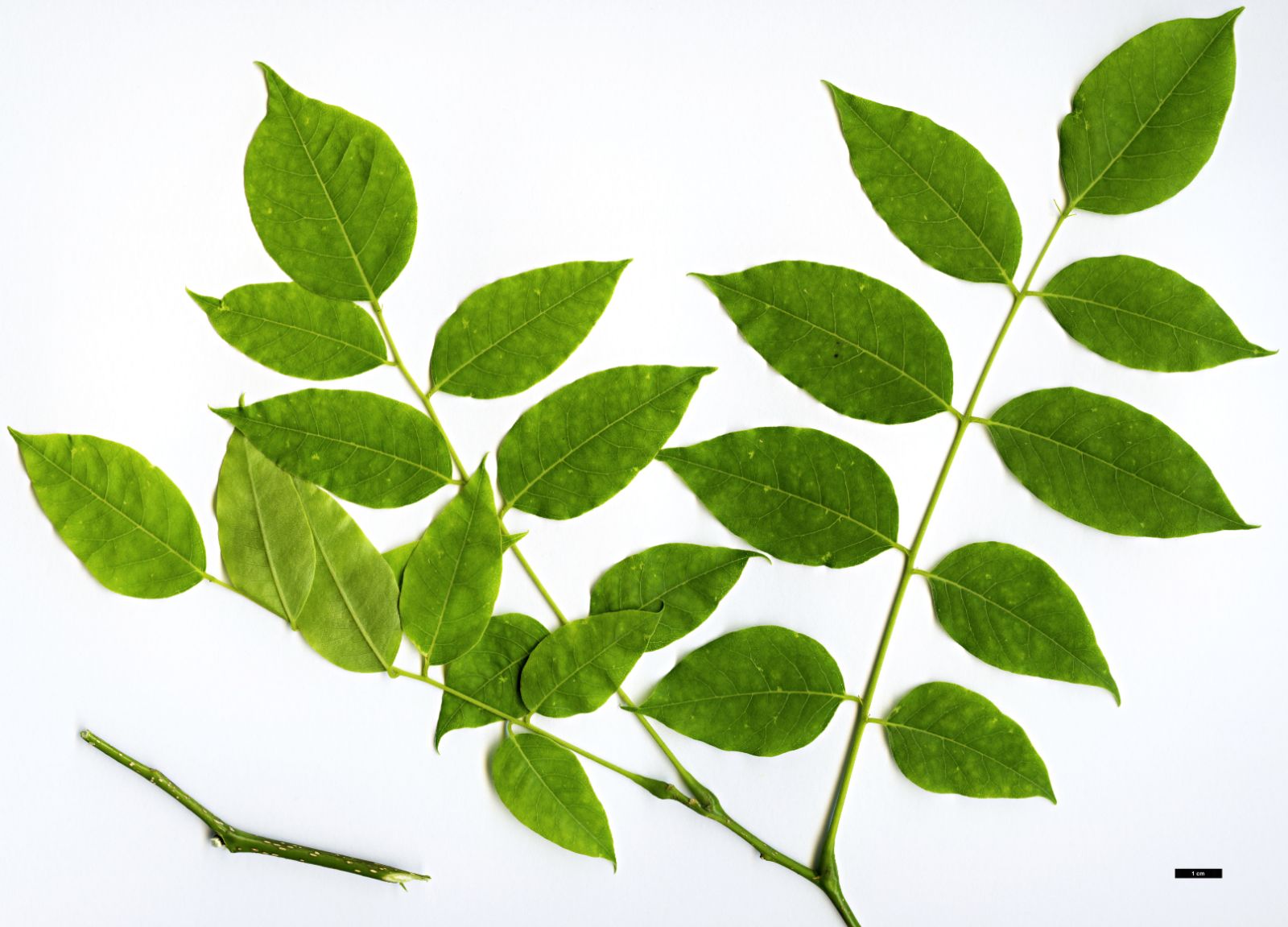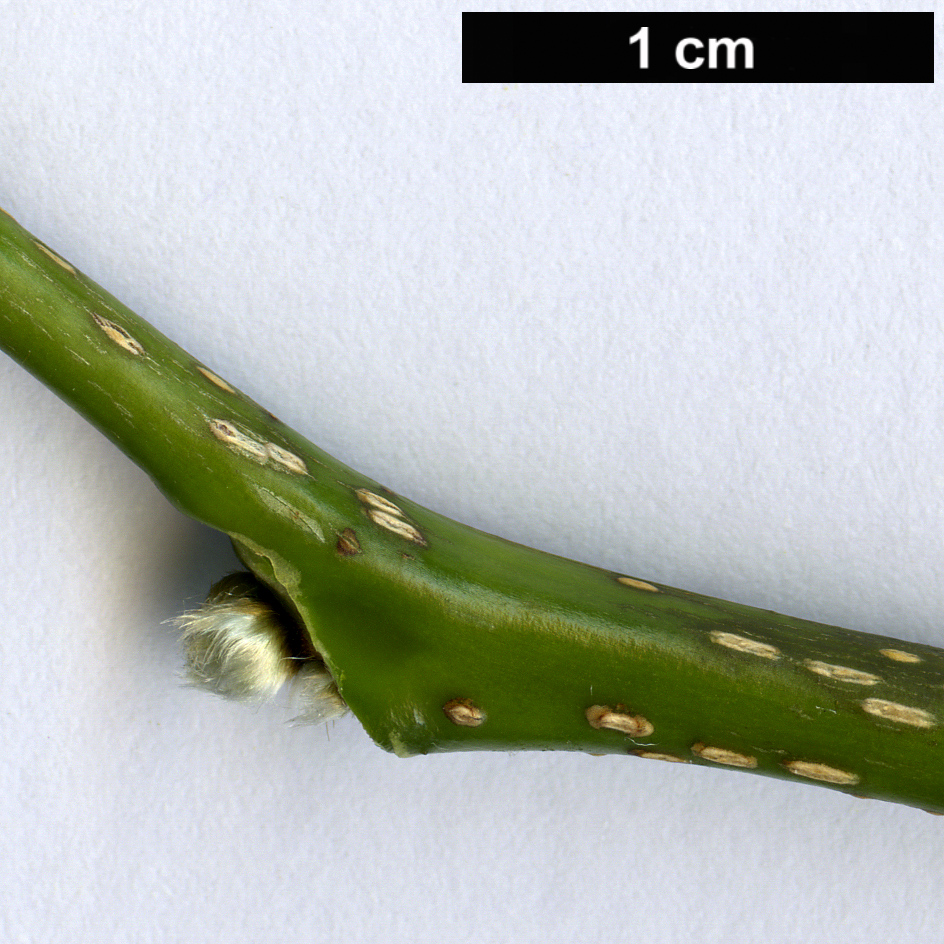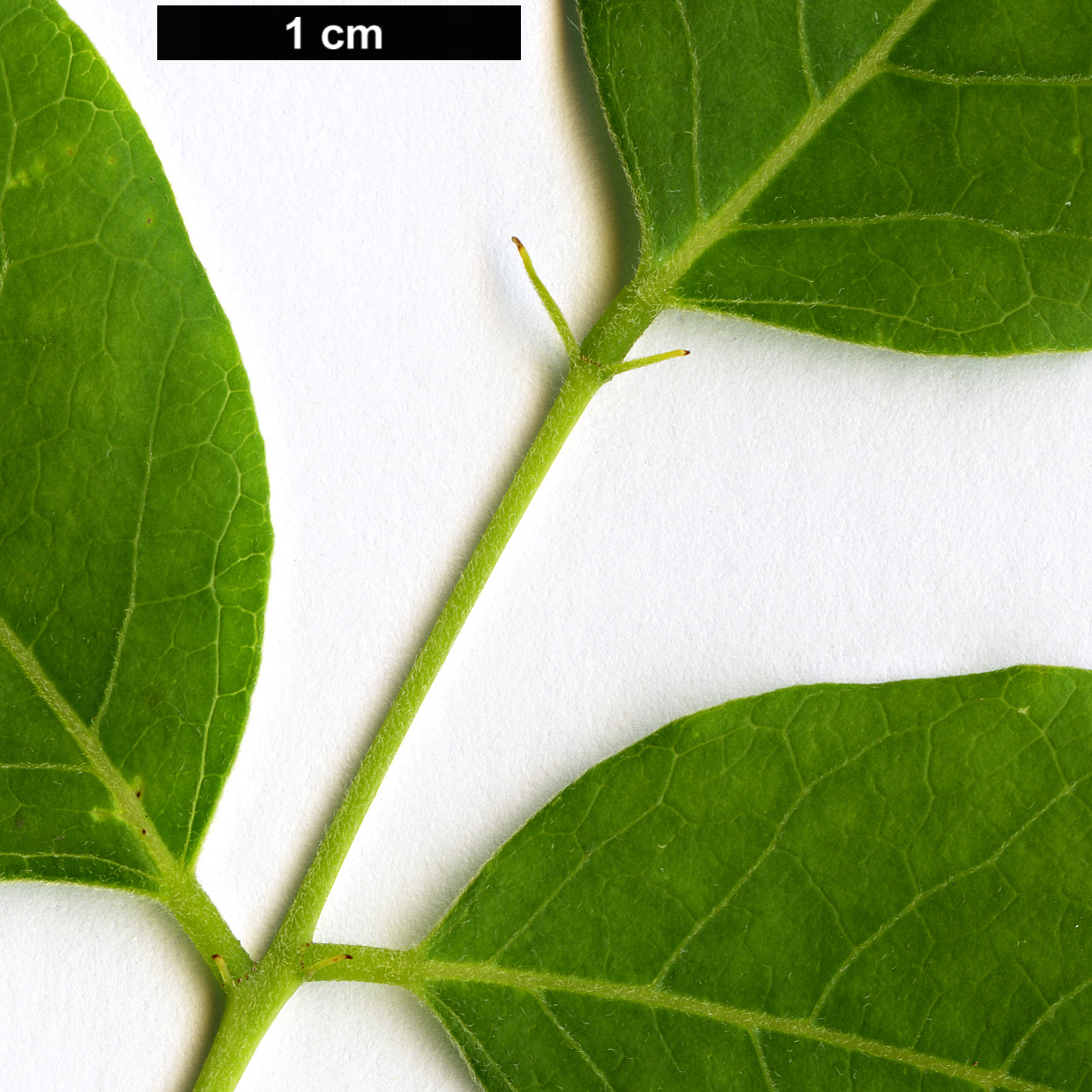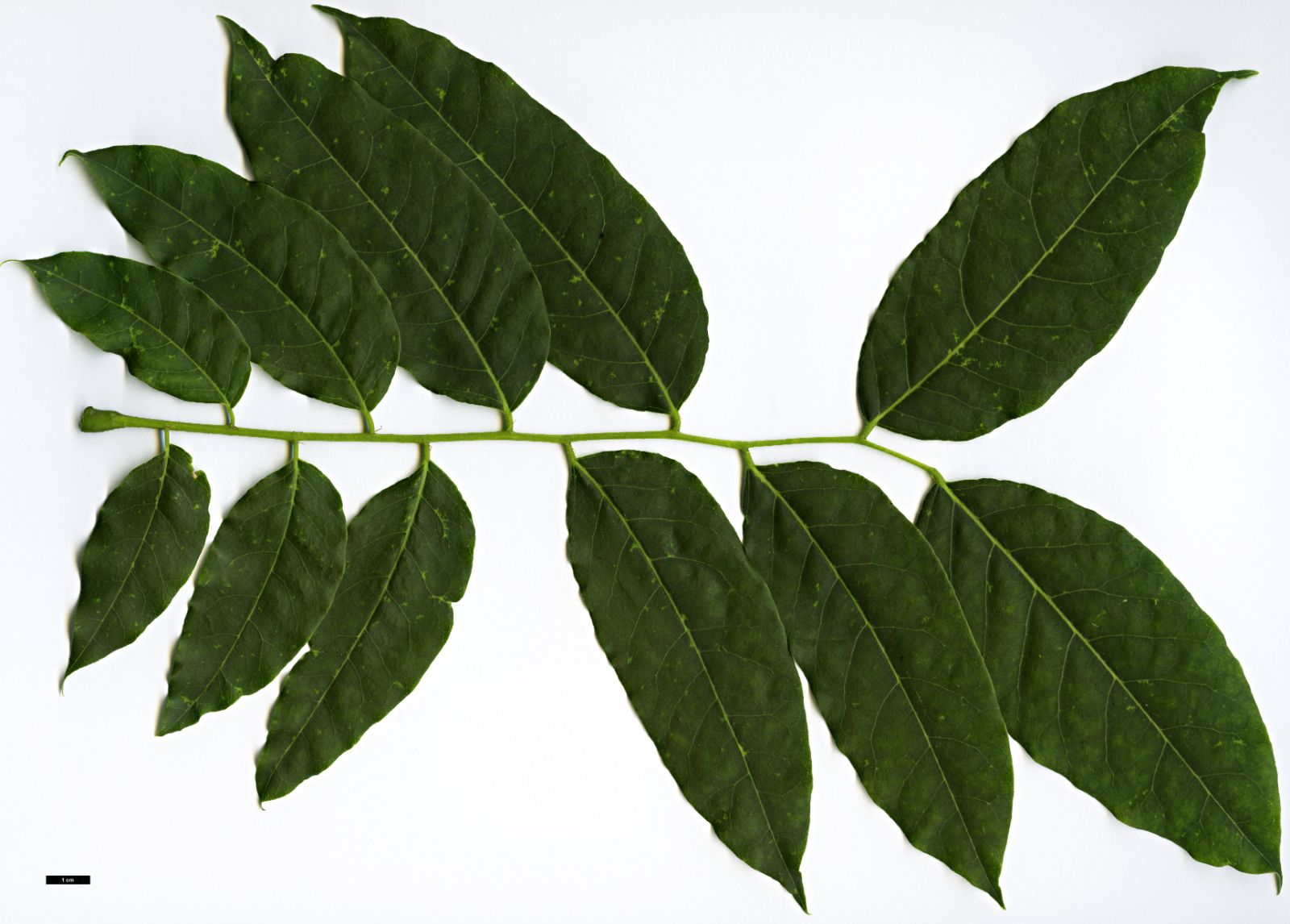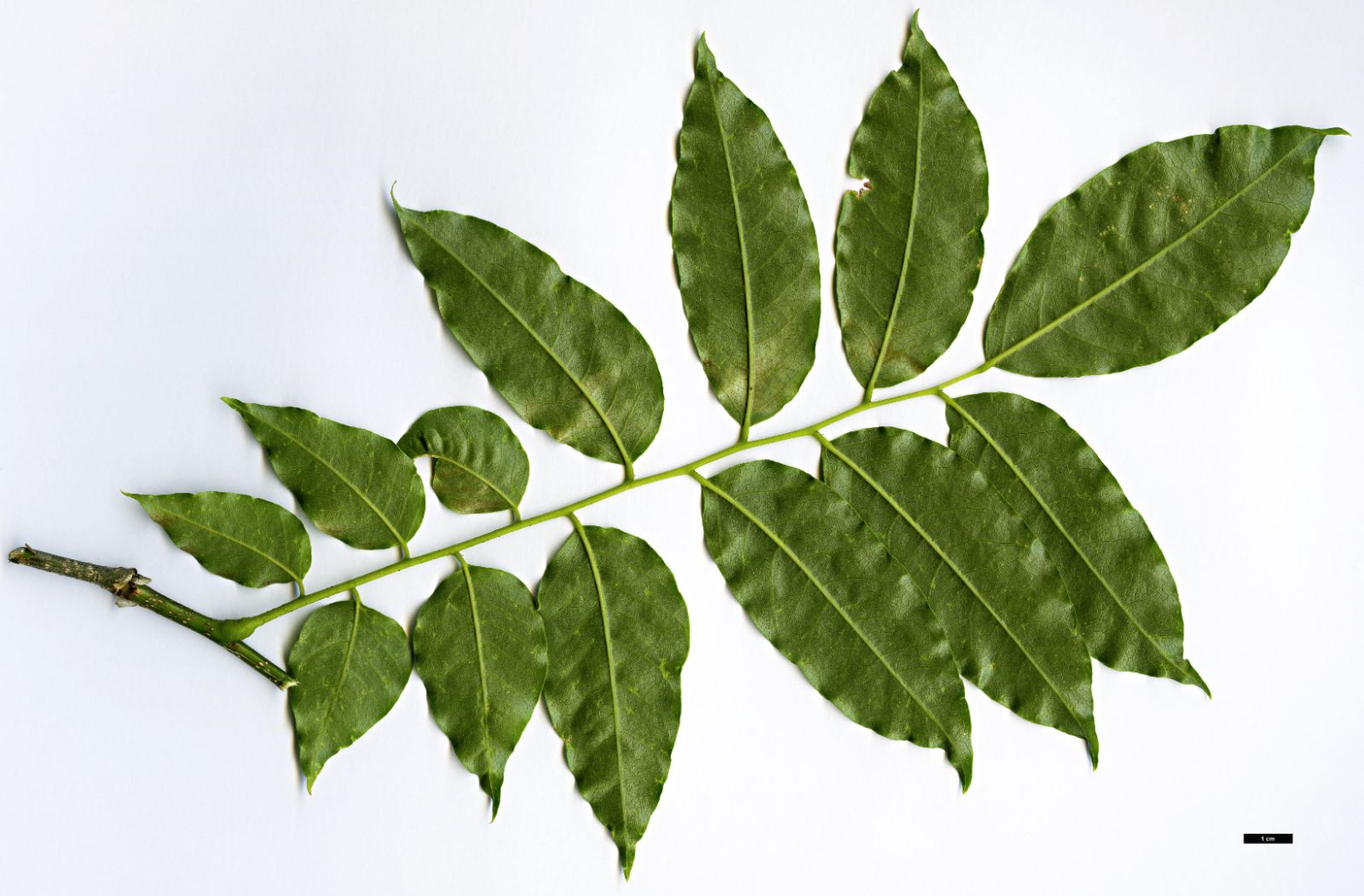Platyosprion platycarpum
Credits
Owen Johnson (2021)
Recommended citation
Johnson, O. (2021), 'Platyosprion platycarpum' from the website Trees and Shrubs Online (treesandshrubsonline.
Genus
Common Names
- Japanese Yellow-wood
Synonyms
- Cladrastis platycarpa (Maxim.) Makino
- Cladrastis chingii Duley & Vincent
- Cladrastis parvifolia C.Y. Ma
- Cladrastis scandens C.Y. Ma
- Cladrastis yungchunii Xiang W. Li & G. S. Fan
Other taxa in genus
Tree to 30 m tall, with a domed crown. Bark grey, smooth into maturity, with a pattern of round lenticels. Shoots slender; buds short, hidden through summer within the swollen base of the leaf-stalk. Leaflets (7–)13(– 15); one unbranched stipel to 2 mm long often present at the base of each petiolule; petiolule 3–5 mm long, with dense grey pubescence; rachis grooved above. Leaflets 20–100 × 10–35 mm, long-elliptic or ovate-oblong with a tapered or rounded base and pointed tip, smaller towards the base of the leaf; green on both sides, sometimes with hairs under the base of the midrib. Inflorescence erect, 10–30 cm high, to 15 cm wide, the flowers opening April–June in the wild. Calyx campanulate, densely white-yellow sericeous, with triangular teeth. Corolla white with a yellow flush at the throat; individual flowers c. 1 cm. Fruit-pod long-elliptic or oblong, 50–80 × 15–20 mm, winged along both sides, ripening June–October in the wild. Seeds 1–3, dark brown or black, oblong, c. 8 mm long. (Flora of China 2021; Spongberg & Ma 1997).
Distribution China Guangdong, Guangxi, Guizhou, Hunan, Jiangsu, Yunnan, Zhejiang Japan Central Honshu, Shikoku South Korea
Habitat Forests, in valleys and slopes below 1000 m asl.
USDA Hardiness Zone 5b
RHS Hardiness Rating H6
Conservation status Least concern (LC)
Under whatever name, Platyosprion platycarpum is not at all a familiar tree in cultivation. (The ‘common’ moniker ‘Japanese Yellow-wood’ is rather unhelpful, in that the species is equally widespread in the wild in China, and is no longer considered a member of the yellow-wood genus – its use should be discontinued.)
In 1901 a plant was received by the Royal Botanic Gardens, Kew from the Simon-Louis nursery at Metz (Andrews 1997) and was planted in the bean-family collection (the legumes; not the author) north of the Heather Garden. Although still labelled until recently as ‘Cladrastis platycarpa’, this tree was really Styphnolobium japonicum, which is closely related but whose general aspect as a tall species with a rugged brown bark is very different; this is also true for the conspicuous example behind the former White Peaks restaurant, which is of similar size but unknown origin, and for another specimen in the family collection which was accessioned in 1908. It seems likely that part of W.J. Bean’s description of ‘Cladrastis platycarpa’ in Trees and Shrubs Hardy in the British Isles (Bean 1976) was originally based on one or other of these specimens, and several dendrologists – including this author – have probably adopted these as their ‘type’ specimens through which to learn the taxon. (When measured by Maynard Greville in 1958, two trees at Kew were also apparently grown as Ormosia hosiei (Tree Register 2021), a semi-evergreen close relative from the subtropical south of China; Alexander Hosie, a retired British Consul-general to China after whom this last species is named, had donated his plant collection to Kew (Wikipedia 2021) and this legacy provides another possible origin for some of the varied ‘Cladrastis platycarpa’ in the gardens.) In the Royal Botanic Garden Edinburgh, a single tree on the bank above the Temperate House, labelled ‘C. platycarpa’ but lacking accession details, is also Styphnolobium japonicum. In 1980, a tree 11.5 m tall was labelled as ‘Cladrastis platycarpa’ at the National Botanic Gardens, Glasnevin in Ireland (Tree Register 2021) but this was removed in the early 1990s during renovation of the Curvilinear Range (Andrews 1997); on the evidence of the Kew and Edinburgh impostors, this record should probably not be taken at face value either.
Meanwhile another European nursery, Späth of Berlin, had supplied an apparently genuine Platyosprion platycarpum to the Arnold Arboretum in the United States in 1900 (Spongberg & Ma 1997), and this was the source in turn of another introduction to Kew, in 1902, from which a close-set group of three scions survives within the Fabaceae collection (Tree Register 2022). Platyosprion was collected again by Ernest Wilson at Hondo in Japan in 1914 (W 7522); a low tree at Bodnant in north Wales, long lost, was understood to have been raised from this collection (Andrews 1997). Wilson collected further seed in Japan in 1919, from which a tree was also grown at the Arnold Arboretum (Andrews 1997); this is likely to be the origin of two more genuine examples at Kew which were received in 1937 and of which the healthier was 10 m tall in 2022 (Tree Register 2022). A fine tree planted by the Eley family at East Bergholt Place in Suffolk, also of unknown origin and long-labelled Cladrastis sinensis (i.e. C. delavayi), seems to be another genuine example of Platyosprion platycarpum. Unlike C. delavayi, it has grown a relatively upright, domed crown on a longer single bole; its grey bark is just starting to crack with age into wide very shallow ridges; the rather glossy leaflets – with their alternate distribution – are more widely spaced on the central stalk and their narrowly ovate shape, on rather longer petiolules, creates a lighter, airier canopy. In this garden’s rather dry, near-continental climate the tree seems very much at home, flowering and fruiting profusely each year; the individual flowers are smaller than those of the cultivated Cladrastis species but they stand above the foliage in wide, delicate plumes. In 2016 this specimen was 13 m × 50 cm dbh (Tree Register 2021). Suffolk farmer Lance Arthey, who has developed a remarkable private arboretum a few miles away, has found that seedlings are easily raised from this plant; one of these had grown well to 6 m by 2016 and, planted beside a genuine C. delavayi, flushes up to six weeks earlier (Tree Register 2021). This example already produces fertile seed, and Lance has donated seedlings to John Hillier at the Sir Harold Hillier Gardens. He also observes that pigeons, which regularly defoliate his C. delavayi and have to be deterred by scarecrows, find the putative Platyosprion unpalatable (L. Arthey pers. comm.).
Two vigorous trees, accessioned as Cladrastis platycarpa in 1999 and tucked away in a little-visited corner of the Valley Gardens in Windsor Great Park, also seem to be genuine, as is a very crowded specimen, unlabelled in 2021 but perhaps from the same source, within the Savill Garden. The larger in the Valley Gardens was 11 m × 54 cm dbh on its short bole in 2021 (Tree Register 2021). One online image from (Madrid Botanic Garden) shows an apparently genuine example flowering well in the much hotter climate of central Spain.
In the United States, its continued cultivation at the Arnold Arboretum has made Platyosprion platycarpum slightly better known; online images and catalogues document good trees at Longwood Gardens in Pennsylvania, at Brookside Gardens in Maryland, in the US National Arboretum in Washington D.C., and the J.C. Raulston Arboretum in South Carolina. Another at the Washington Park Arboretum, in the much wetter, cooler climate of Seattle, had reached 15 m in height by 1995 (Van Pelt 1996). One plant at Orono, Maine, was killed by winter cold (Dirr 2009).
Platyosprion platycarpum is a classic example of a species which, had it been better served by botanists and the major UK botanical institutions, would probably by now be valued and widely planted as a graceful and reliable medium-sized flowering tree, at least for the warmer parts of England. It is to be hoped that this will finally come about in the not too distant future.

